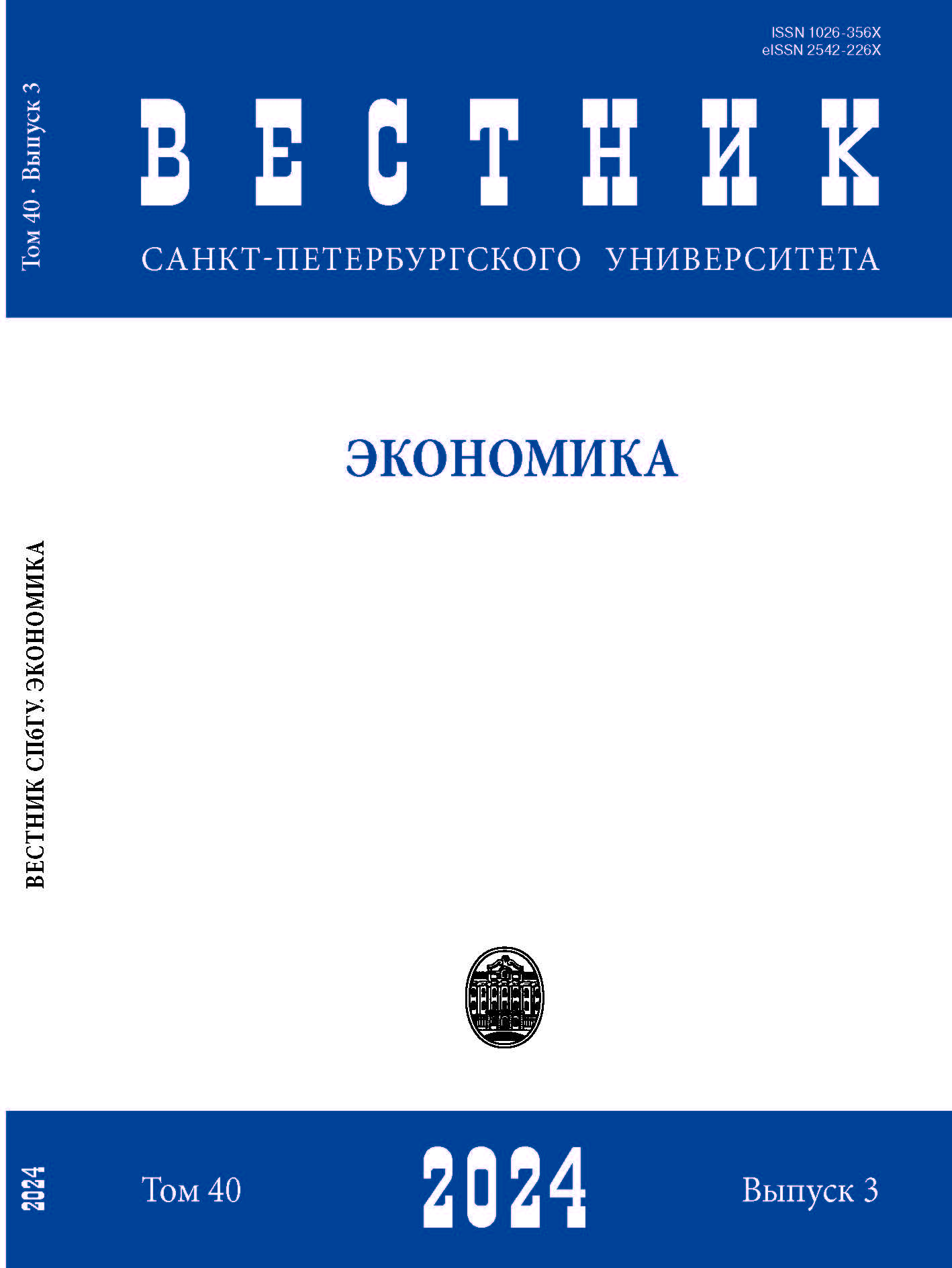Determination of the optimal interval of the average load of the scientific equipment of the center for collective use
DOI:
https://doi.org/10.21638/spbu05.2024.301Abstract
Modern Centers for the collective use of scientific equipment represent the basis for the formation of unique scientific competencies and competitive advantages in the market of research services. As highly specialized tools of scientific and innovative infrastructure, whose activities are aimed at implementing priority areas of scientific and technological development of the country, Centers funded, including from the state budget, face the need for a reliable assessment of the effectiveness of public funds investments, which leads to the formation of an objective need to improve the organization of work in this direction. The state regulator legislatively establishes requirements for monitoring the effectiveness of the use of expensive scientific equipment and a unique instrument base, however, the regulatory approach does not take into account the specifics of the functioning of the CCP regarding specialization, diversity of the instrument base, etc. This article discusses the problems of applying a standardized approach to evaluating the effectiveness of the centers for the collective use of scientific equipment and unique scientific installations. The general nature of the indicators included in the requirements for centers for the collective use of scientific equipment and unique scientific installations that have been created and (or) the functioning of which is provided with the involvement of budgetary funds does not reflect the differences between centers for collective use in terms of functioning, equipment composition, types of research and other essential characteristics. Attention is focused on one of the leading indicators, namely, the degree of loading. The authors believe that the averaging of requirements can lead to data distortion and neutralize the results of state monitoring, and suggest approaches to developing criteria for evaluating the optimal interval of the average load of scientific equipment of the center for collective use and justification of the appropriate time of such, depending on the type and purpose of use. The study was conducted on the example of the Center for Collective Use of St. Petersburg State University — St. Petersburg State University Science Park.
Keywords:
center for the collective use of scientific equipment, optimal loading interval, evaluation of the effectiveness
Downloads
References
Белов, С. А., Линская, Ю. В. и Кропачев, Н. М. (2020) ‘Единство системы государственных вузов в современной России’, Вестник Санкт-Петербургского университета. Менеджмент, 2, c. 151–163.
Белов, С. А., Соловьев, А. А. и Суязов, В. В. (2021) ‘Принцип коллективного пользования государственным имуществом вузов как гарантия права на образование’, Вестник Санкт-Петербургского университета. Менеджмент, 20 (3), c. 453–468.
Белкин, Ю. Д., Казакова, М. А. и Скворцов, А. Е. (2023) ‘Методология расчета рейтинга «Результативность центров коллективного пользования научным оборудованием и уникальных научных установок»’, Управление наукой и наукометрия, 18 (4), c. 699–720.
Гусев, А. Б. (2010) ‘Методические подходы к оценке деятельности центров коллективного пользования научным оборудованием’, Наука. Инновации. Образование, 5 (1), c. 189–202.
Зацаринный, А. А., Волович, К. И., Денисов, С. А., Ионенков, Ю. С. и Кондрашев, В. А. (2020) ‘Методические подходы к оценке эффективности центра коллективного пользования «Информатика»’, Системы высокой доступности, 16 (2), c. 60–66.
Качак, В. В. (2010) ‘Центры коллективного пользования научным оборудованием в секторе современных исследований и разработок’, Российские нанотехнологии, 5 (5–6), c. 17–23.
Клочков, В. В. и Чернер, Н. В. (2015) ‘Центры коллективного пользования в прикладной авиационной науке: эффективность и направления развития’, Финансовая аналитика: проблемы и решения, 42 (276), c. 2–17.
Лущекина, Е. В. (2020) Исследовательская инфраструктура России: состояние и перспективы развития. М.: Буки Веди.
Нехаев, И. О., Брюханова, В. В. и Лошаченко, А. С. (2021) Протокол для многостадийного изучения морфологии методами СЭМ редких и уникальных экземпляров/объектов беспозвоночных на примере микромоллюсков. Методики Научного парка СПбГУ. СПб.
Петрова, Е. В., Дресвянников, А. Ф. и Салмина, О. А (2013) ‘Разработка комплексного подхода к оценке деятельности центра коллективного пользования научным оборудованием. «Наноматериалы и нанотехнологии»’, Вестник Казанского технологического университета, 16 (9), c. 51 53.
Соловьев, А. А. и Суязов, В. В. (2021) ‘Организационно-правовые механизмы повышения эффективности государственных расходов на образование и науку’, Вестник Санкт-Петербургского университета. Право, 14 (4), с. 907–920.
Lee K., Choi S. and Yang J. S. (2021) ‘Can expensive research equipment boost research and development performances?’ Scientometrics, 126 (9), pp. 7715–7742.
Lauto, G. and Valentin, F. (2013) ‘How Large-Scale Research Facilities Connect to Global Research’, Review of Policy Research, 30 (4), pp. 381–408.
Downloads
Published
How to Cite
Issue
Section
License
Articles of the St Petersburg University Journal of Economic Studies are open access distributed under the terms of the License Agreement with Saint Petersburg State University, which permits to the authors unrestricted distribution and self-archiving free of charge.






